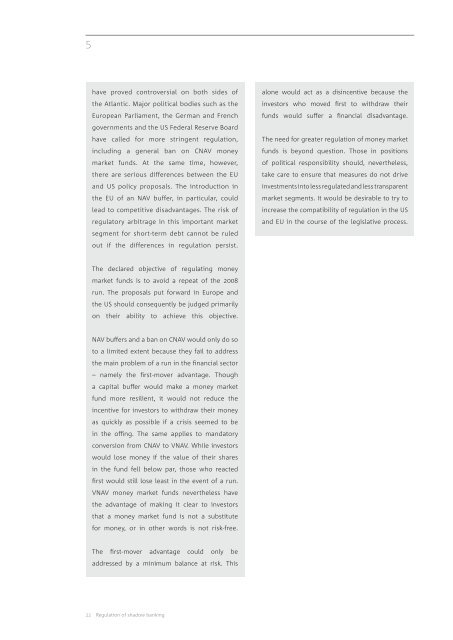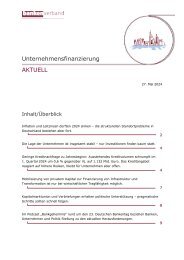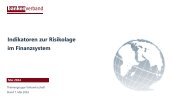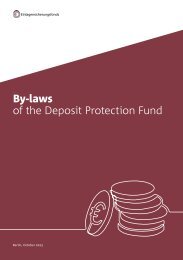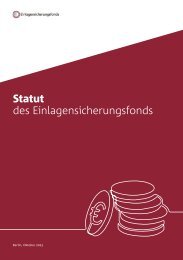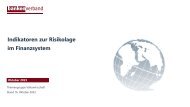Regulation of shadow banking
Shadow banking is given a large share of the blame for the financial crisis. This perception raises the question of what kind of shadow banking system should remain in place in the future.
Shadow banking is given a large share of the blame for the financial crisis. This perception raises the question of what kind of shadow banking system should remain in place in the future.
Create successful ePaper yourself
Turn your PDF publications into a flip-book with our unique Google optimized e-Paper software.
5<br />
have proved controversial on both sides <strong>of</strong><br />
the Atlantic. Major political bodies such as the<br />
European Parliament, the German and French<br />
governments and the US Federal Reserve Board<br />
have called for more stringent regulation,<br />
including a general ban on CNAV money<br />
market funds. At the same time, however,<br />
there are serious differences between the EU<br />
and US policy proposals. The introduction in<br />
the EU <strong>of</strong> an NAV buffer, in particular, could<br />
lead to competitive disadvantages. The risk <strong>of</strong><br />
regulatory arbitrage in this important market<br />
segment for short-term debt cannot be ruled<br />
out if the differences in regulation persist.<br />
alone would act as a disincentive because the<br />
investors who moved first to withdraw their<br />
funds would suffer a financial disadvantage.<br />
The need for greater regulation <strong>of</strong> money market<br />
funds is beyond question. Those in positions<br />
<strong>of</strong> political responsibility should, nevertheless,<br />
take care to ensure that measures do not drive<br />
investments into less regulated and less transparent<br />
market segments. It would be desirable to try to<br />
increase the compatibility <strong>of</strong> regulation in the US<br />
and EU in the course <strong>of</strong> the legislative process.<br />
The declared objective <strong>of</strong> regulating money<br />
market funds is to avoid a repeat <strong>of</strong> the 2008<br />
run. The proposals put forward in Europe and<br />
the US should consequently be judged primarily<br />
on their ability to achieve this objective.<br />
NAV buffers and a ban on CNAV would only do so<br />
to a limited extent because they fail to address<br />
the main problem <strong>of</strong> a run in the financial sector<br />
– namely the first-mover advantage. Though<br />
a capital buffer would make a money market<br />
fund more resilient, it would not reduce the<br />
incentive for investors to withdraw their money<br />
as quickly as possible if a crisis seemed to be<br />
in the <strong>of</strong>fing. The same applies to mandatory<br />
conversion from CNAV to VNAV. While investors<br />
would lose money if the value <strong>of</strong> their shares<br />
in the fund fell below par, those who reacted<br />
first would still lose least in the event <strong>of</strong> a run.<br />
VNAV money market funds nevertheless have<br />
the advantage <strong>of</strong> making it clear to investors<br />
that a money market fund is not a substitute<br />
for money, or in other words is not risk-free.<br />
The first-mover advantage could only be<br />
addressed by a minimum balance at risk. This<br />
22 <strong>Regulation</strong> <strong>of</strong> <strong>shadow</strong> <strong>banking</strong>


